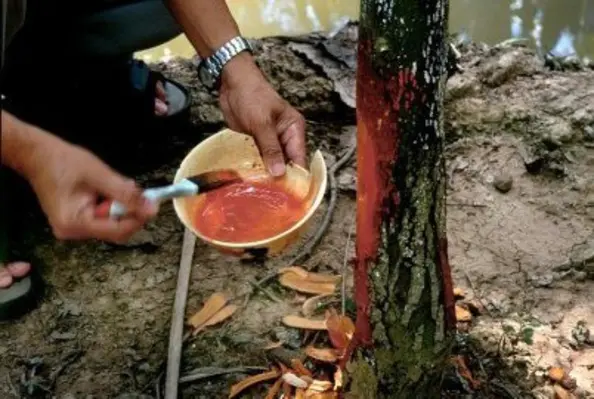Page 3 of 5Avocado
Avocado ‘decline’ caused by root infection with Phytophthora cinnamomi is well known. The same organism can infect above ground on the collar and trunk of the avocado tree, but stem infections are usually caused by the closely related species Phytophthora citricola. The main difference between root and stem infecting Phytophthora species in avocado is that above ground infections nearly always occur through weakened bark whether due to wounding or through tree stress.
Stem cankers originate at or below ground level and establish on the crown and lower trunk but can also occur much higher up the tree trunk at (45-50 cm), especially if wounding is prevalent during pruning, picking and other tasks.
Canker lesions are discoloured areas on the bark producing copious quantities of red-coloured resin seeping out and oozing through cracks in the bark. Excision of the canker reveals an orange-brown outer layer of wood, instead of the normally creamy-white healthy inner living bark which emits a fruity smell when exposed to the air. Red coloured margins of the canker are where the Phytophthora is most active and most easily isolated. Cutting and cleaning treatments must extend well beyond this area.
Infections must be identified early by regular trunk inspection because the tree itself does not show any obvious symptoms until the disease starts eating into the cambium and moving around the circumference of the tree trunk. From this point on, decline and death is rapid occurring in just one or two months.
Scraping off cankerous tissue and painting with copper sulphate has been tried but growers complain how the highly soluble copper sulphate is easily washed off by rain to require repeat treatment. Canker paint containing cuprous oxide in an oil emulsion formulation is much superior in this respect.
Phytophthora citricola infects avocado fruits and these diseased fruits left on the orchard floor provide a continual source of inoculum for further trunk infections, especially during wet weather and irrigation.





